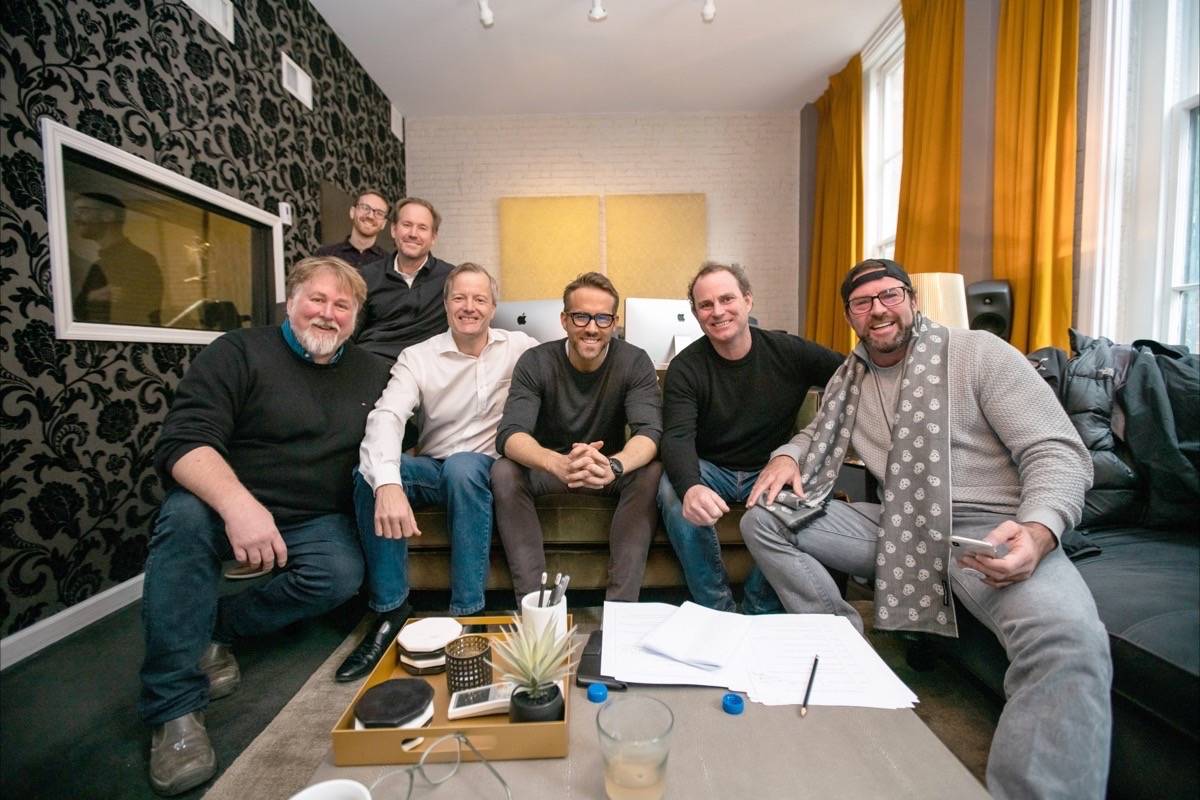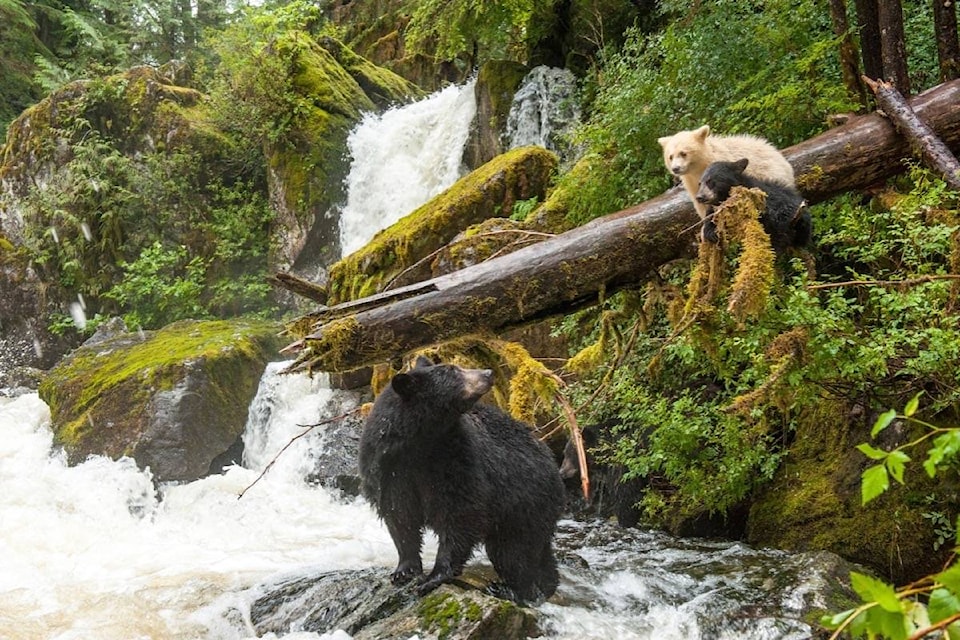Parksville resident Byron Horner has spent the last several years as the executive producer of an IMAX film capturing the majesty of the forests and animals in B.C.’s Great Bear Rainforest.
It’s a role he likely never expected to play. But with little more than a month before the premier of the documentary Great Bear Rainforest: Land of the Spirit Bear, Horner spoke with the NEWS about how he became involved in the project, what it was like spending weeks in the remote area, seeing spirit bears and, recently, working with Deadpool star Ryan Reynolds who agreed to narrate the movie.
Horner’s career path hadn’t touched on moviemaking until his boss, Kyle Washington of the Washington family (known for their shipyards, barges, tugboats, ferries and a variety of other companies working out of B.C. and elsewhere) mentioned an investment opportunity in a documentary film about the Great Bear Rainforest.
As a financial advisor to the family, Horner was asked to take a look at the project, which, as it happened, was being directed by an old, dear friend of Horner’s, Ian McAllister.
“My jaw kind of dropped,” said Horner of hearing his friend’s name.
Years before, he had attended McAllister’s wedding in the Great Bear Rainforest. The wedding would turn out to be Horner’s introduction to the place.
The Washington family decided to fund the project as more of a philanthropic decision more than anything, said Horner as they don’t really expect to make any money with it. But the decision to support the movie was contingent on Horner overseeing the whole project, and putting in some of his own money as well.
“It was a bit of a gut check,” said Horner. “How committed was I to conservation? It’s one thing to do your recycling. It’s another thing to make a commitment of your family and everything else, but I ultimately said, ‘You know what, I want to do this,’ and to this day I have no idea if we’re going to… make our money back… but I’m really glad I did it. It’s been a terrific experience.”
With that, Horner became the executive producer of the project as well as president of Spirit Bear Entertainment, created specifically for this documentary.
With the various responsibilities of the job came a few perks, like joining film crews for a month to experience the wilds of the Great Bear Rainforest.
Horner soon found that capturing the stars of the show was a “kind of hurry up and wait” effort.
“To capture wolves, you have to get up literally at the break of dawn because you have a little window where there is enough light before they go back to their den. And some days they are there, some days they are not,” said Horner.
“But some days you have magical days,” he said. One of those was coming upon a bear who’s body was slowing down as it got ready to hibernate.
“It was kind of sleeping and eating and sleeping and eating,” he said, meaning camera crews could get some amazing images. “It was a really amazing experience.”
Opportunities like that come through the dedication of the crew, which was impressive, said Horner. He estimated director McAllister had to do more than 100 dives to get the shots of herring he wanted.
Another important part of the filming, and an important part in the story of the film itself, is the First Nations on whose lands the crew was able to film.
The film crew worked with the Gitga’at Nation, the Kitasoo/Xaixais Nation and the Heiltsuk Nation based on a protocol agreement that described how to film in each area, the co-operation between the film project and the nations, and hiring members of the nations to help with the project.
Working in co-operation also helped in located some of the film’s most difficult, and most prizes, stars, said Horner.
“Our friends in those First Nations were looking out for us to try to tell us if they spotted any (spirit bears). We, during that whole two-year period, we found, I think we found six bears,” said Horner. “It is the rarest bear in the world.”
“It’s amazing to see it,” said Horner of the spirit bear, “because you’ve seen pictures of it, you’ve heard about it, and then to see it in its natural element, just doing what it does, which is trying to eat salmon, trying to forage. They are incredibly beautiful creatures, so it’s really inspiring to see them in this natural setting.”
While the spirit bear is perhaps the star of the film, the backbone of the story the film tells comes from First Nations members.
“The key theme of the whole film is, there is a youth from each of those three First Nations in the film that appear in the film and talk about what they are doing in terms of the ongoing… stewardship and conservation efforts in the area, in the Great Bear Rainforest… and what the Great Bear Rainforest means to them.
“And that’s a really powerful part of the story,” said Horner.
It also marks two firsts for the film, noted Horner in a previous news release: “This is the first giant screen film for IMAX theatres shot exclusively in British Columbia, and the first to feature Indigenous Peoples in Canada.”
Another voice in the film is that of Ryan Reynolds who was brought on to narrate the film.
“We were thrilled to have him,” said Horner. Not only has Reynolds brought more attention to the film, but some humour as well.
“We really said to him… as you see the images, please feel free to ad-lib,” said Horner. “He certainly had us laughing.”
After crews spent two seasons filming in the Great Bear Rainforest, and three years working on the project, Horner said he’s excited to introduce this beautiful, and often difficult-to-reach place to people.
“The goal for all of us who were on the film-making team was to make this inaccessible, wild place accessible to all through the film, so that people could see this magical part of British Columbia that very few people have actually been to, because it’s so isolated,” said Horner.
“What’s amazing about this area is the First Nations who are there are a huge part of making it and protecting it over the years, and through the stakeholder process that led to the land-use act that governs the Great Bear Rainforest, First Nations stewardship was critical to the ongoing protection of this area.”
The premier of the film is in Vancouver on Feb. 12, followed by screenings in Vancouver, Victoria, Toronto and Sudbury, Ont. on Feb. 15.
“I’m so excited about the premier,” said Horner. “The world premier we’re going to have in Vancouver, we’re going to have a good contingent from the different First Nations partners who we worked with at the event, so it’s going to be a real celebration of the film, of the area, and it’s going to feel really satisfying to see it completed after all the work.”
For more info, check out greatbearrainforestfilm.com.
Like us on Facebook and follow us on Twitter

